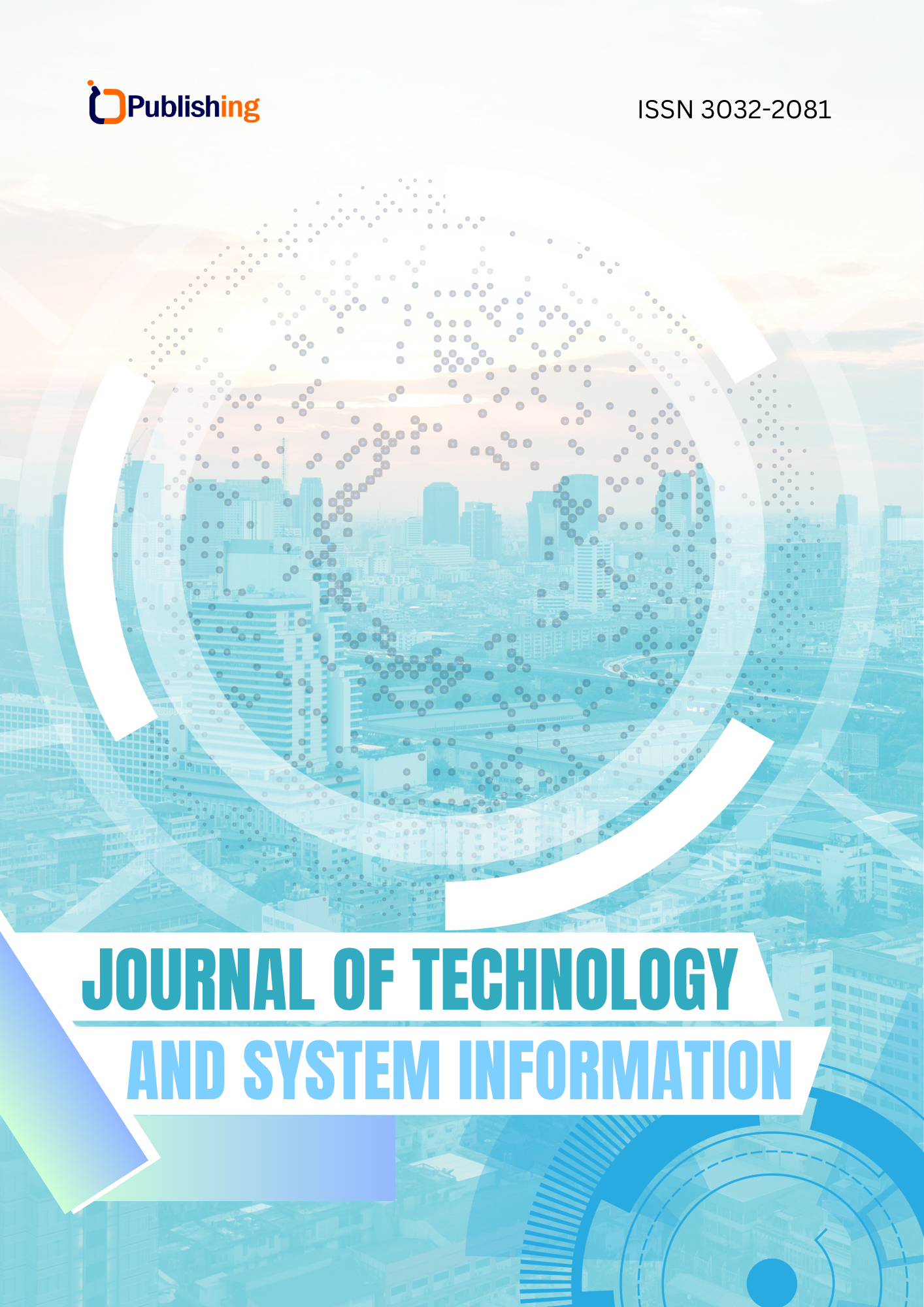Implementation of the ADDIE Model in Chatbot Development using Diagramflow
DOI:
https://doi.org/10.47134/jtsi.v2i2.3758Keywords:
ADDIE Model, Chatbot, DiagramFlowAbstract
This study discusses the implementation of the ADDIE model in the development of a customer service chatbot using DiagramFlow. The ADDIE model, which consists of five stages—analysis, design, development, implementation, and evaluation—is applied to ensure that the chatbot enhances customer service efficiency. The analysis stage helps in understanding the needs of both customers and the customer service team, while the design and development stages ensure the chatbot functions optimally. The implementation of the chatbot demonstrates a positive impact in reducing the workload of customer service representatives and improving user experience. The evaluation indicates that the chatbot can provide fast and effective responses, although challenges remain in understanding customer language and achieving more natural interactions. Therefore, further development is necessary to enhance the chatbot’s intelligence, allowing it to better adapt to customer needs and deliver more optimal services.
References
AGRAWAL, R. (2024). Development and pilot testing of practicepal, a conversational agent to support the delivery of a brief behavioural activation treatment for depression in rural india... https://doi.org/10.21203/rs.3.rs-5426475/v1
Al-Jaf, K. (2024). Leveraging chatbots for effective educational administration: a systematic review.. https://doi.org/10.20944/preprints202410.0238.v1
Azzahrah, A., Budiman, I., Haryanti, Y., & Mahpudin, M. (2022). Development of android application learning media using ispring suite 9 to increase student learning motivation. Eduhumaniora | Jurnal Pendidikan Dasar Kampus Cibiru, 14(2), 121-126. https://doi.org/10.17509/eh.v14i2.41994
Baal, S., Le, S., Fatehi, F., Verdejo‐García, A., & Hohwy, J. (2022). Effecting behaviour change using an artificial intelligence chatbot: a pilot randomised controlled study.. https://doi.org/10.31234/osf.io/2xuat
Følstad, A. and Brandtzæg, P. (2020). Users' experiences with chatbots: findings from a questionnaire study. Quality and User Experience, 5(1). https://doi.org/10.1007/s41233-020-00033-2
Grové, C. (2021). Co-developing a mental health and wellbeing chatbot with and for young people. Frontiers in Psychiatry, 11. https://doi.org/10.3389/fpsyt.2020.606041
Haristiani, N. and Rifai, M. (2021). Chatbot-based application development and implementation as an autonomous language learning medium. Indonesian Journal of Science and Technology, 6(3), 561-576. https://doi.org/10.17509/ijost.v6i3.39150
Huriyah, L., Hamida, N., Ma'rifatunnisa', W., & Baru, R. (2022). Development of interactive e-module on islamic religious education subject: implementation of independent curriculum at schools. Edukasia Islamika, 7(2), 292-311. https://doi.org/10.28918/jei.v7i2.5829
Kang, K., Kim, S., Oh, B., & Kim, Y. (2024). Development of a chatbot for school violence prevention among elementary school students in south korea: a methodological study. Child Health Nursing Research, 30(1), 45-53. https://doi.org/10.4094/chnr.2023.054
Lee, K., Dabak, S., Kong, V., Park, M., Kwok, S., Silzle, M., … & Lin, L. (2023). Effectiveness of chatbots on covid vaccine confidence and acceptance in thailand, hong kong, and singapore. NPJ Digital Medicine, 6(1). https://doi.org/10.1038/s41746-023-00843-6
Ma, Y., Achiche, S., Pomey, M., Paquette, J., Adjtoutah, N., Vicente, S., … & Lebouché, B. (2023). Adapting and evaluating an artificial intelligence-based chatbot through patient and stakeholder engagement to provide information for different health conditions: master protocol for an adaptive platform trial (the marvin chatbots) (preprint). Jmir Research Protocols. https://doi.org/10.2196/54668
Misischia, C., Poecze, F., & Strauß, C. (2022). Chatbots in customer service: their relevance and impact on service quality. Procedia Computer Science, 201, 421-428. https://doi.org/10.1016/j.procs.2022.03.055
Musfiroh, K., Suharsono, S., & Meylani, V. (2024). Development of interactive learning media based on website chatbots on plant tissue material. Research and Development in Education (Raden), 4(1), 404-414. https://doi.org/10.22219/raden.v4i1.32195
Musfiroh, K., Suharsono, S., & Meylani, V. (2024). Development of interactive learning media based on website chatbots on plant tissue material. Research and Development in Education (Raden), 4(1), 404-414. https://doi.org/10.22219/raden.v4i1.32195
Ndruru, A., Fikry, M., & Yusra, Y. (2023). Chatbot ptipd customer care center service using dialogfow. Komputasi Jurnal Ilmiah Ilmu Komputer Dan Matematika, 20(2), 101-111. https://doi.org/10.33751/komputasi.v20i2.8281
Othman, Z., Yusof, N., Malek, M., Xi, M., Rohaizad, A., & Amin, M. (2024). Isetech-ai-powered dental consultation chatbot: enhancing public healthcare accessibility and awareness. Journal of Advanced Research in Applied Sciences and Engineering Technology, 14-27. https://doi.org/10.37934/araset.57.2.1427
Putra, H., Santoso, H., & Cifran, C. (2022). Implementation of chatbot customer service features on pt dian prima jayaraya using dialogflow. Infotech Journal of Technology Information, 8(2), 143-148. https://doi.org/10.37365/jti.v8i2.151
Rodríguez-Martínez, A., Aguilar, T., Moreno, J., & Jiménez, J. (2023). Qualitative analysis of conversational chatbots to alleviate loneliness in older adults as a strategy for emotional health. Healthcare, 12(1), 62. https://doi.org/10.3390/healthcare12010062
Schanke, S., Burtch, G., & Ray, G. (2021). Estimating the impact of “humanizing” customer service chatbots. Information Systems Research, 32(3), 736-751. https://doi.org/10.1287/isre.2021.1015
Ummah, N., Windayani, N., Irwansyah, F., & Sulaeman, D. (2021). Android-based digital book oriented to multiple chemical representations on terpenoid learning materials. Online Learning in Educational Research (Oler), 1(1), 1-15. https://doi.org/10.58524/oler.v1i1.23
Utami, D., Nurwati, I., & Lestari, A. (2024). Development of school-based comprehensive sexuality education module in junior high school. Proc. of the International Conference Multidisciplinary Res. fo, 1, 214-221. https://doi.org/10.31098/icmrsi.v1i.801
Yusup, M. and Kurniawan, R. (2024). Understanding the impact of chatbot technology in learning: analysis of utilization at sma negeri 5 binjai. JITCSE, 1(1), 49-55. https://doi.org/10.61306/jitcse.v1i1.8
Downloads
Published
How to Cite
Issue
Section
License
Copyright (c) 2025 Fadhil Mureno Ega Nugraha , Muhammad Setiyawan

This work is licensed under a Creative Commons Attribution 4.0 International License.










